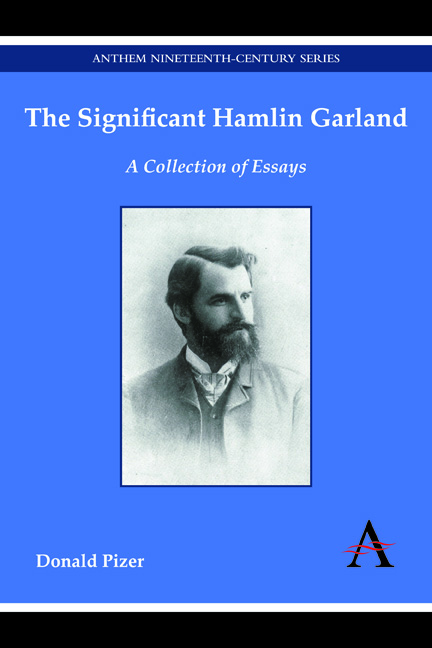Book contents
- Frontmatter
- Dedication
- Contents
- Preface
- A Selected Secondary Bibliography
- Editorial Note and Acknowledgments
- Part I THE RADICAL YEARS
- 1 Hamlin Garland in the Standard
- 2 Hamlin Garland and the Prairie West
- 3 Hamlin Garland and the Radical Drama in Boston, 1889–91
- 4 A Summer Campaign in Chicago: Hamlin Garland Defends a Native Art
- Part II THE MAJOR WORKS
- Notes
- Index
4 - A Summer Campaign in Chicago: Hamlin Garland Defends a Native Art
from Part I - THE RADICAL YEARS
Published online by Cambridge University Press: 05 November 2014
- Frontmatter
- Dedication
- Contents
- Preface
- A Selected Secondary Bibliography
- Editorial Note and Acknowledgments
- Part I THE RADICAL YEARS
- 1 Hamlin Garland in the Standard
- 2 Hamlin Garland and the Prairie West
- 3 Hamlin Garland and the Radical Drama in Boston, 1889–91
- 4 A Summer Campaign in Chicago: Hamlin Garland Defends a Native Art
- Part II THE MAJOR WORKS
- Notes
- Index
Summary
In January 1893, Hamlin Garland spent several days in Chicago on his way back to Boston after almost a month on the Pacific Coast. Chicago was bustling with activity in preparation for the May opening of the World's Columbian Exposition. An air of artistic and intellectual enterprise encouraged the belief that the Exposition would be a landmark in what Henry B. Fuller later called Chicago's “upward movement.” “Chicago,” William Morton Payne proclaimed, “having sufficiently astonished the world by her commercial prosperity, is preparing a final astonishment in the form of an intellectual development that will overshadow her material achievements […].”
There were several reasons why Garland succumbed to this faith and resolved to move from Boston, where he had lived since 1884, to Chicago. He was firmly convinced of the need for each locality to express itself in literature, and he was as certain that local literary centers would arise to aid this expression. As a midwestern local colorist, Garland felt that Chicago was his literary center and that the time had come to assist its growth. Moreover, as a local colorist who believed it was necessary to verify his recollections and impressions, he realized that Chicago was within easy distance of his material. Such a location was particularly desirable since he soon expected, as he had recently informed a Los Angeles reporter, to “treat of Chicago”in his fiction.
- Type
- Chapter
- Information
- The Significant Hamlin GarlandA Collection of Essays, pp. 37 - 44Publisher: Anthem PressPrint publication year: 2014

